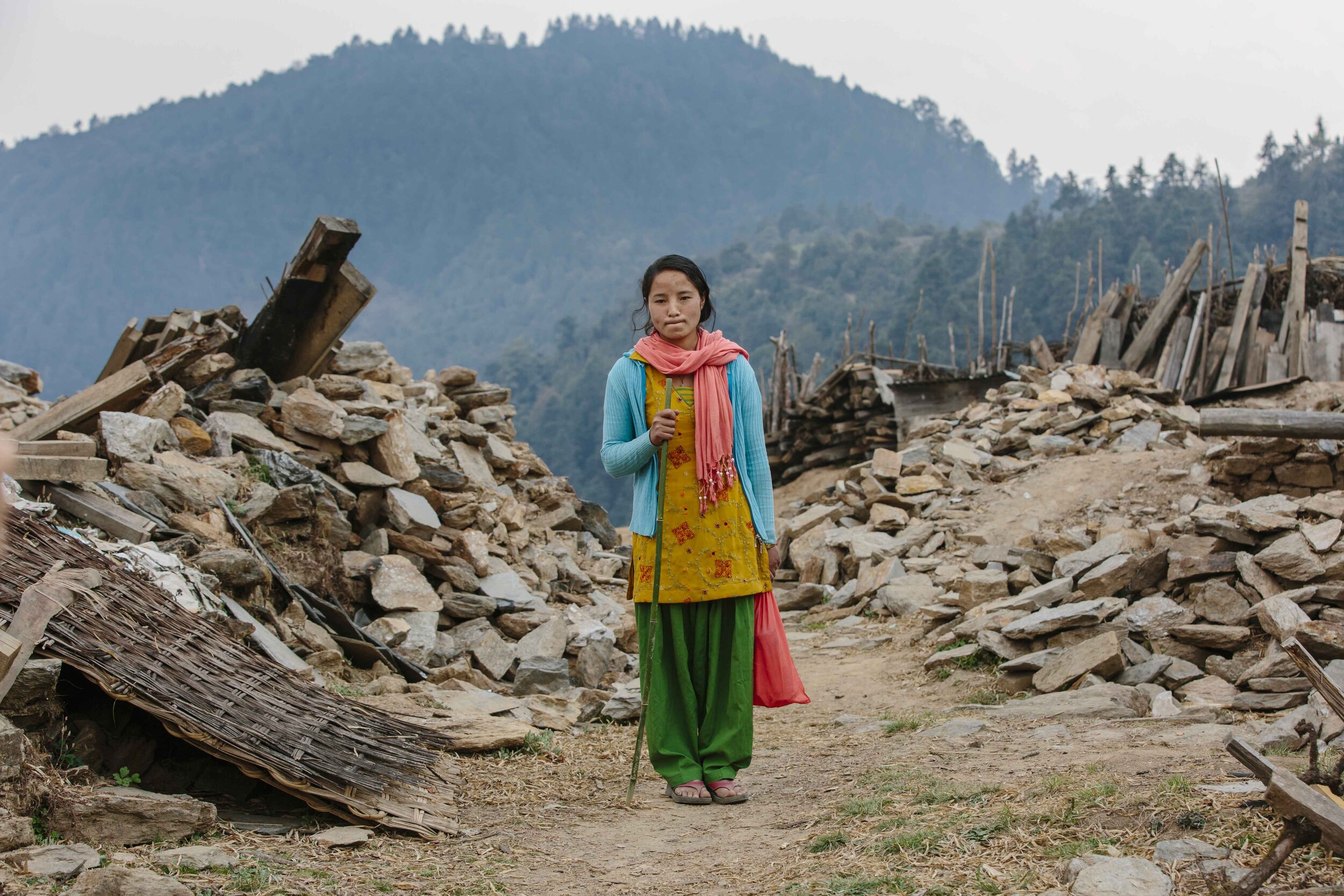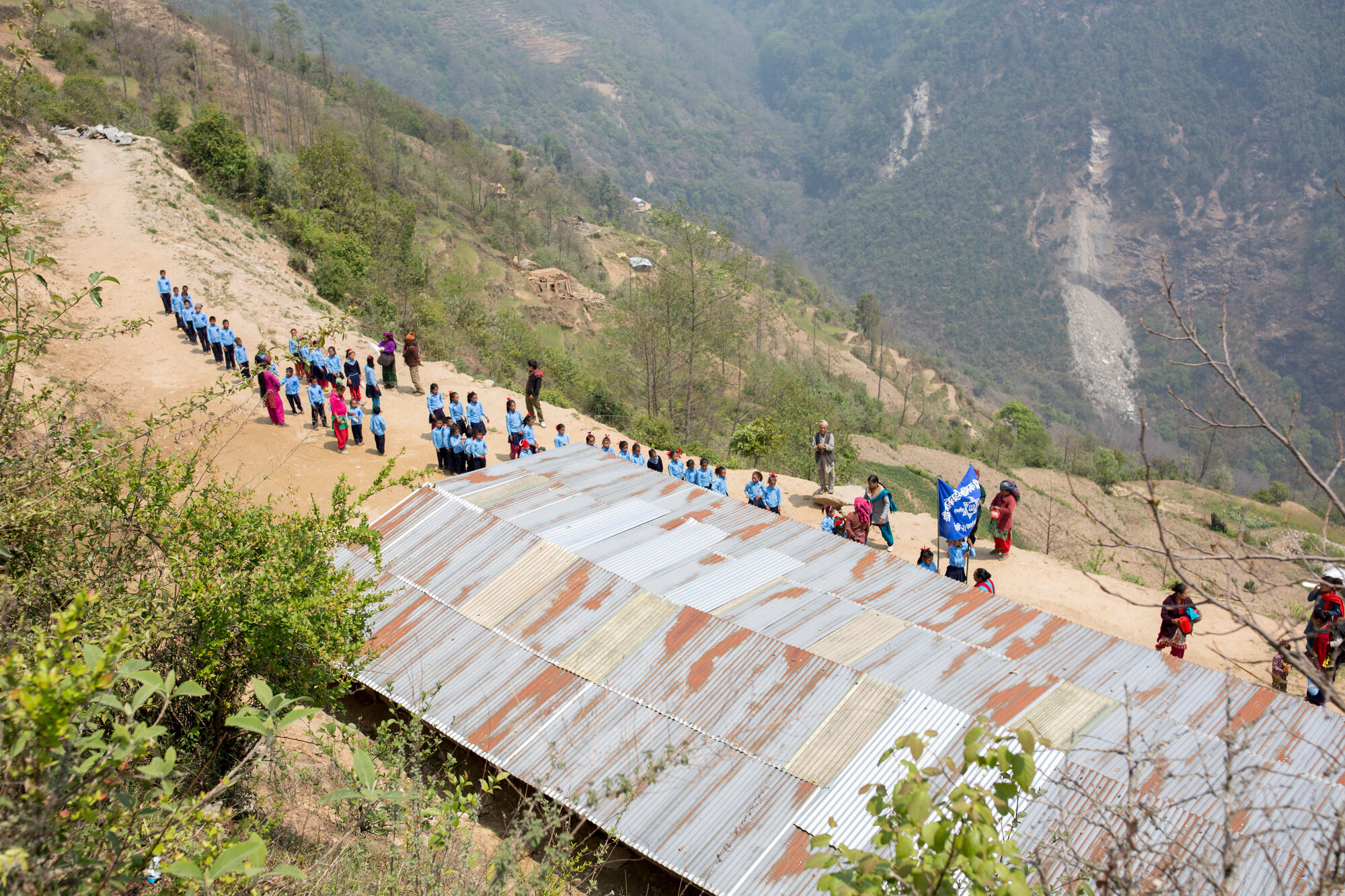BLACK SPOTS
On April 25th 2015, at 11:56am (N.S.T) a devastating 7.8M earthquake struck Nepal. The initial quake was followed by a series of over 400 tremors, ranging in intensity and culminating in a second huge 7.3m quake on the 12th of May 2015. Entire villages were flattened, nearly 9000 people were killed, 100s of thousands were made homeless overnight and a million people were pushed under the poverty line.
The world rallied around the tiny landlocked nation and billions of dollars in aid were pledged. However a year on, almost none of the $4 billion had been disbursed; stalled by a fractious, inert government caught up in a bureaucratic thicket of political haggling and diplomatic rows.
In addition to this, some of the hardest hit districts and poorest subsections of the population became ‘black spots’ in aid. This means that, often due to remoteness and difficulty of access, almost no governmental or large international aid agencies have reached the villages that need help most. It has instead been left to small NGOs and local people to quite literally pick up the pieces of their broken lives.
This sense of helplessness has led to stresses which have compounded the effects of the initial damage caused by the quake; setting off a ripple effect and causing multiple other interlinked humanitarian disasters. Such as the trafficking of women and children, mental health issues leading to suicides and family breakdowns and huge increase in the number of street children.
Nepal doesn’t lack international support or a motivated and resilient population however the government’s almost criminal negligence with regards to disbursement of aid is compounding what was already a humanitarian disaster and risks tipping Nepal beyond the point of recovery.

One year on and still no aid. Due to sheer remoteness and difficulty of access, many of the worst hit areas have become 'black spots' in aid, with no large international aid group or governmental relief reaching some of the most desperately in need. The result is that many families are still living in makeshift shelters of corrugated iron and tarpaulin.

Prem maya Tamang, a young Nepali girl stands amongst the rubble of her village in the foothills of the himalayas in the remote district Ramechap, almost a year to the day after the earthquake. Most of the affected areas still lie in ruin as reconstruction efforts have been left almost entirely to local people and determined small NGO's.

Memories of you Khadka weeps as she arranges photographs of her late husband and injured son in her new home. After losing the family home in the earthquake, Khadka and family received help from a small NGO to build a new home. Sadly, six weeks after completion her husband passed away. Shortly after her only son, then the designated bread winner was involved in a serious work accident. She is now unable to pay for the operation he needs and he risks losing his hand. 'I don't know what to do. I have no support'.

It's not the same without you here Khadka's son Suman's bed lies empty whilst he is in a hospital in Kathmandu awaiting an operation that may not come.


It all lies in ruin. One of the central building of Priti village, Ramechap district, lies in ruin a year on from the earthquake. It's unlikely it will be rebuilt.



School children line up, ready to walk as a parade through the mountain paths to the opening of their new school in Pritee village, Ramechap. Many of these children had been walking 2 to 3 hours along steep mountain paths to attend a temporary school since last year's earthquake. The new school was funded by a small international NGO, as the village is yet to receive any government aid.

This is Perner, he is 11 years old. Shortly after the earthquake his father committed suicide following a mental breakdown. He is now the sole breadwinner in the family and has to leave school to tend the fields and support his family. Mental health issues are becoming an increasing problem with families becoming desperate about their fate. If aid does not reach families that desperately need it, more will suffer a similar fate to young Perner.

Perner's grandfather who has diminished mental and physical health so cannot help with work


Preparations for a Nepalese new years meal on 14th April takes on particular significance as is is 10 days before the one year anniversary of the quake.

Rebuilding the monastery Lama Geishe Jimpa, a high-standing monk from Kopan Monastery in Kathmandu, walks amongst the foundations of the Buddhist monastery in the very remote Himalayan village of Wafal, Sindhulpowchuk. Despite losing many homes, their school and their monastery the village have received no governmental aid. All their rebuild efforts have been left to local people, the monastery and small local & international NGO’s.

Sunrise in Wafal village, high in the mountain district of Ramechap, on the day of the one year anniversary of the earthquake.

A lama prepares for the one year anniversary memorial in Batase village, which was almost entirely destroyed in the earthquake, killing many residents and injuring many more.

one year on, earthquake memorial. Batase Village.

Bereaved family of the people who died during the earthquake mourn their loved ones.





















